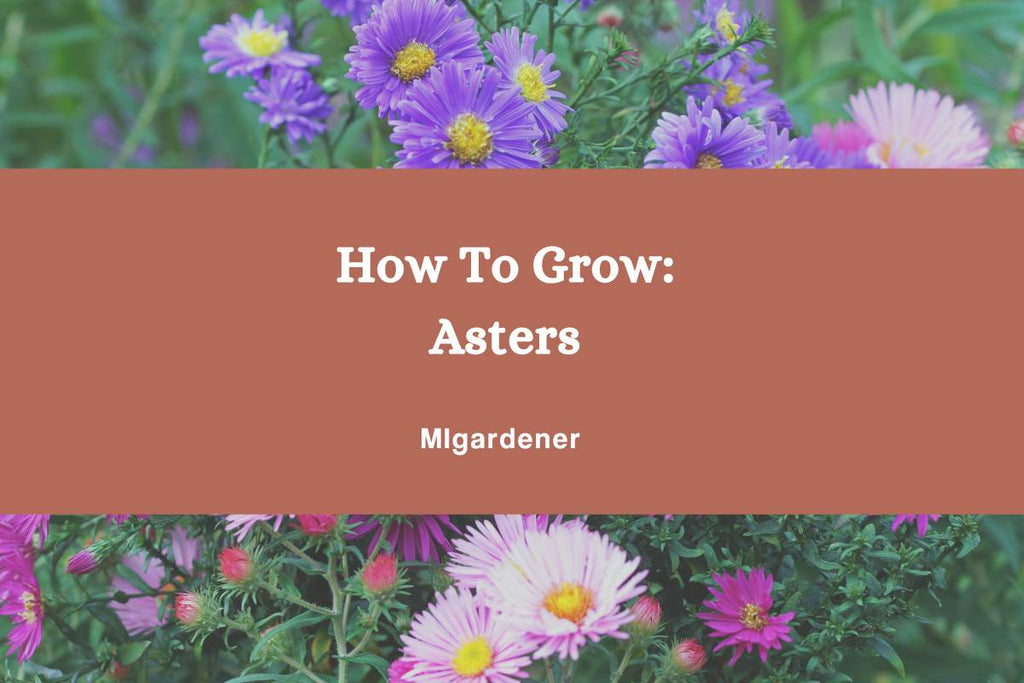
How to Grow Asters - Complete Growing Guide
Asters are beautiful flowers that come in a wide variety of colors and sizes. Some look like daisies, others look like a cactus blossom with long wispy petals. They are easy to grow and care for, making them a great choice for both experienced and novice gardeners. In this post, we will go over the basic steps for growing asters in your garden or in containers.

1. Location
First, it's important to choose the right location for your asters. They prefer well-drained soil and full sun to partial shade. If you're planting them in a garden bed, make sure to prepare the soil by removing any weeds and adding compost or other organic matter. If you're planting in containers, use a high-quality potting mix and make sure the container has drainage holes.
2. Planting
When it comes to planting, asters can be planted from seed or from established plants. If you're planting from seed, start them indoors about 6-8 weeks before the last frost date in your area. If you're planting established plants, make sure to space them about 12-18 inches apart. Asters will get very large and most gardeners forget this and end up with crowded plants. When planting, make sure to plant the crown of the plant at soil level to prevent crown rot.
3. Watering
Make sure to water your asters regularly to keep the soil consistently moist. Asters also prefer to be fertilized regularly with a balanced, water-soluble fertilizer. Once a month is a good schedule during the growing season.
4. Care & maintenance
Asters also require regular deadheading, or removing spent blooms, to encourage more blooms to form. Deadheading also helps to prevent the plant from self-seeding and potentially becoming invasive.In addition to regular care, asters may also require staking or support as they grow taller. We use small bamboo stakes to support taller stems. This will help to prevent them from falling over or breaking under the weight of the blooms.
5. Pest control
Asters are relatively hardy, but they can be susceptible to pests such as aphids, spider mites, and Japanese beetles. Keep an eye out for these pests and use an appropriate insecticide or pesticide if necessary. Asters can also be affected by fungal diseases such as powdery mildew and botrytis. To prevent these diseases, make sure to provide good air circulation around the plants and avoid overcrowding.
Finally, it's important to note that asters come in a wide variety of colors, shapes, textures, and sizes. Some popular varieties include the New England aster, which can grow up to 4 feet tall and has large, purple blooms, and the dwarf aster, which only grows to about 12 inches tall and has small, white blooms. No matter what variety you choose, asters are sure to add color and beauty to your garden.





Great info. Bought some New England Asters last year. They were beautiful!
Will they reseed them selves?
Do you the seeds? I would love to try my hand at growing them.
Leave a comment